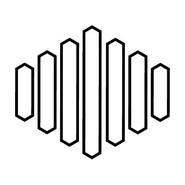2 KINETIC STUDIES
These studies explore the relation between sound and mechanical movement. Elements of my “clockwork” mechanisms are interconnected dually - each sound has a corresponding movement and all movements (as well as all sounds), work simultaneously and interdependently to create a perpetual sound sculpture that manifests in space almost tangibly. The sonification of certain trajectories triggers specific behaviors of the sound objects, so the listener is provided with multiple renditions of the work he or she can listen to.
|
Study no.1 is guided by the principle of symmetry. The central spot of the composition is in the middle of the room - half the way on both horizontal X- and Z-axis. Each object always moves through both halves of at least one of the X- or Z-planes. The element which is being doubled, is followed by the same-pace movement of the element on the opposite side of the axis, but the movement is being reversed: element no.6 positioned on Z-4 goes from X-5 to X+5 while at the same time in the same speed element no.7 at Z+4 goes from X+5 to X-5.
There are three elements which are the musical nucleus of the composition (1, 2, 3). These sounds are airy (noisy) but they have a recognisable pitch and form a minor triad. All other elements are tuned to these three elements which define the tonal center of the piece. This kind of interpretation of the harmonic aspect of the composition, parallels the interpretation of ‘symmetrical’ in spatial domain. |
Study no.2 is based on the rotational movement of majority of elements, and this is also the only movement being applied globally to all elements at once, at one point in the composition. Being rotated, the objects’ acoustic characteristics change and the overall soundscape of the piece is in a state of flux all the time. I worked with sinusoid electronic sounds and the vertical aspect of the piece could be interpreted through a division of the frequency spectrum. Some elements covered the higher frequencies, some middle ones and a single element covers the (sub-)bass range. In this composition, the movement on the Y-plane has been used less statically than in the Study no.1. Except programming each individual movement and behaviour of the object, I decided on four modes of each composition. Each mode consist of the specific combination of the elements, times of their activation and de-activation. These provisional decisions could be replaced by the audience’s own choice and different constellations could be made. My ‘studies’ - just like some of the sculptures by Jean Tinguely - are continuously working, repetitive machines, so which cannot be heard in their entirety, but are becoming audible segmentally, as one object sets the next one in motion.
|
